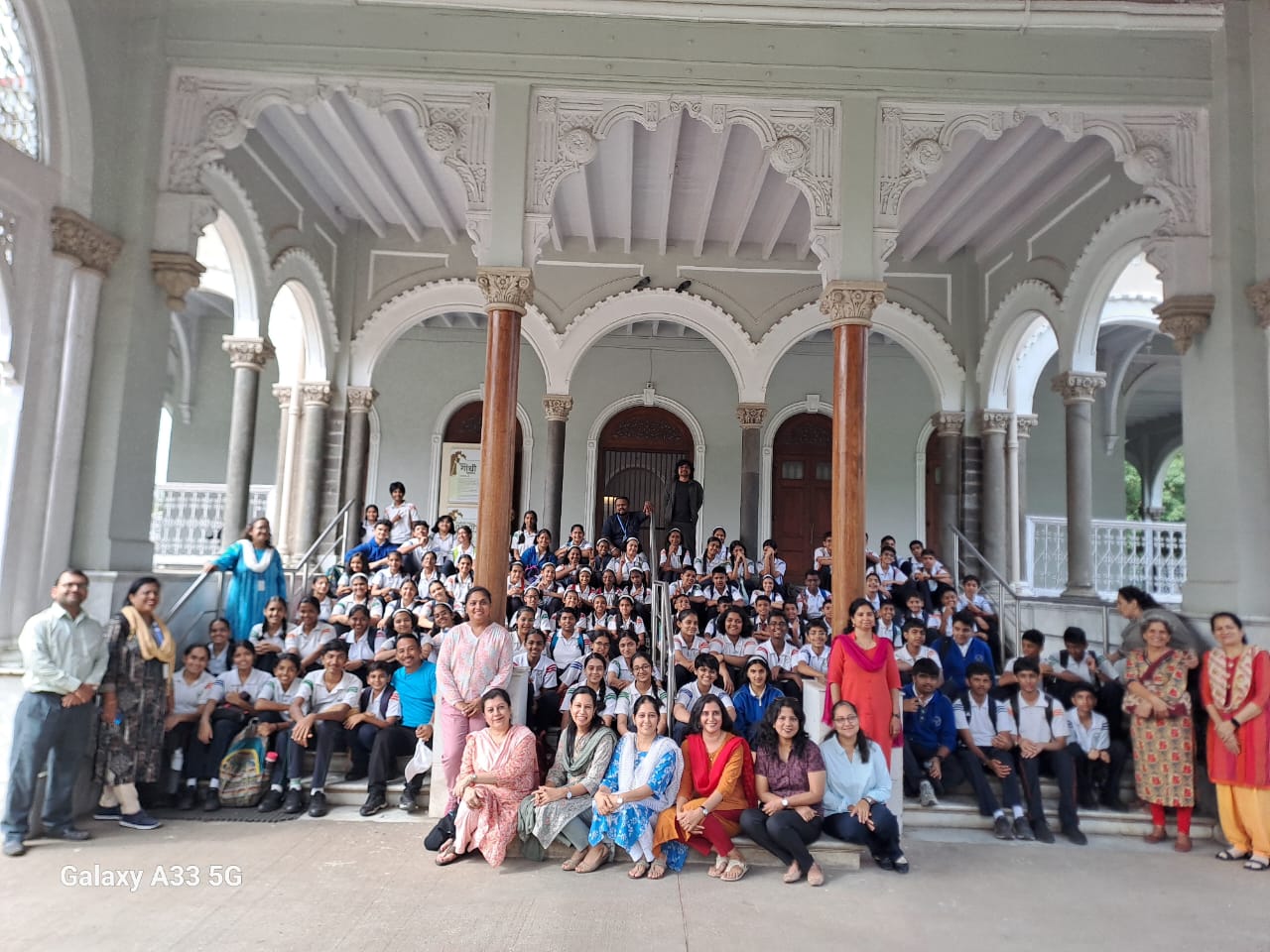
The Heritage Club
DATE: 22 nd June 2024
NAME OF THE ACTIVITY: A visit to the Agakhan Palace
REPORT
Visits are always beautiful and fill a person’s mind with joy and enthusiasm. One such grand site is the Aga Khan Palace, located in the city of Pune which is well known for its archectural excellence and historical significance. Sultan Muhammed Shah Aga Khan III built it. The palace was an act of charity by the spiritual leader of the Nizari Ismaili Muslims. They wanted to help the poor in the neighbouring areas of Pune, who were hit by famine. They offered them work by involving them in the construction of the palace which lasted 5
years.
This Majestic palace is closely linked to the Indian freedom movement as it served as a prison for Mahatma Gandhi, his wife Kasturba Gandhi, and his secretary Mahadev Desai. Sarojini Naidu and several others were also imprisoned during the Quit India
Movement that demanded an end to the British rule in India. The Gandhi National Memorial Society presently has its headquarters at the palace, spread across 19 acres. The second activity for the Heritage Club was a visit to the Aga Khan Palace on 22nd June 2024. Once inside the palace complex, the guide Ms Neelam Mahajan shed light on how the palace was built. She explained certain historical events that led to Gandhi’s house arrest at the palace. After the detailed information provided by the guide, we saw the six galleries exhibiting several statues of Gandhi and others. The galleries contained elaborate write-ups and photos describing the history of the Quit India Movement. It exhibited a statue of the procession of the Quit India Movement and another statue depicted Gandhi lifting an untouchable child.
The most touching statue was of Gandhi sitting in front of a framed photo of Kasturba. The rear end of the palace grounds contained the samadhis (memorials housing the ashes) of Kasturba Gandhi and Mahadev Desai. These were simple octagonal structures with inscriptions in English, Hindi and Urdu. In 1992, a portion of Gandhi’s ashes were shifted to Aga Khan Palace grounds and a marble samadhi was built over it. The three samadhis are today enclosed in a walled compound with marble flooring.
We were also delighted to see the pictures depicting important events in the Indian freedom struggle. The personal belongings of Mahatma Gandhi during his exile in the palace, like utensils, clothes, and his personal effects [towel, prayer beads, chappals] were also exhibited.
The room in which Kasturba Gandhi took her last breath and the letter written by Gandhiji on the death of his dear secretary are some of the important relics displayed in the palace. It was truly overwhelming to dive into the ocean of our history and explore the pearls of our
glorious past. Visiting the Aga Khan Palace painted a comprehensive picture which the students will cherish forever. The monument’s historical significance, architectural beauty, and the personal emotions that it evoked made it a truly unforgettable experience.
Report Compiled by: Ms. Maria Waghmare
Edited by: Ms. Shaheen Chaiwala




